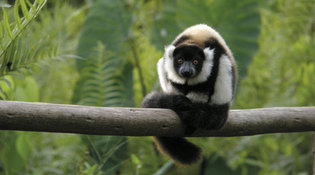 loading
loading
FindingsOrphaned trees in the rainforestSome tree species may not survive without lemurs.  Wikimedia CommonsView full imageSierra Club founder John Muir once said, speaking of the natural world: “When we try to pick out anything by itself, we find it hitched to everything else in the universe.” Consider the lemurs of Madagascar. Over the last several thousand years, intensifying human activity on the island has helped push at least 17 species of lemur to extinction. These lemurs were bigger than those that still survive, and were able to swallow and disperse the large seeds of many rainforest trees. With the lemurs’ extinction, many trees have now lost their primary means of seed dispersal: they have been “orphaned,” as a May study in the Proceedings of the National Academy of Sciences explains. The idea of orphaned species is not new, “so we were expecting to find some when we went into the study,” says Sarah Federman ’18PhD, a student in ecology and evolutionary biology and the article’s first author. “The extent of the dispersal ability that was lost with the extinctions is what surprised us.” (To determine whether trees had been orphaned, she and her coauthors measured the cranial and tooth morphology of living and extinct lemurs, then compared their likely diets with the seed sizes of tree species that have no obvious way to spread their seeds.) The potential slow die-off of these trees, which provide food and shelter for many other animals, would have cascading effects on the ecosystem, with “potentially far-reaching consequences,” the article notes. “It raises an interesting philosophical question,” says Federman. “We have no living dispersers and the long-term survival of these tree is tenuous, at best. So do conservation programs acknowledge the fact and move on, or do we try to come up with an effective management program?” The findings, she adds, also raise implications for the present: Madagascar’s black-and-white ruffed lemurs (one is shown above) and red ruffed lemurs are both listed as critically endangered—and both occupy unique niches as dispersers of large seeds.
The comment period has expired.
|
|